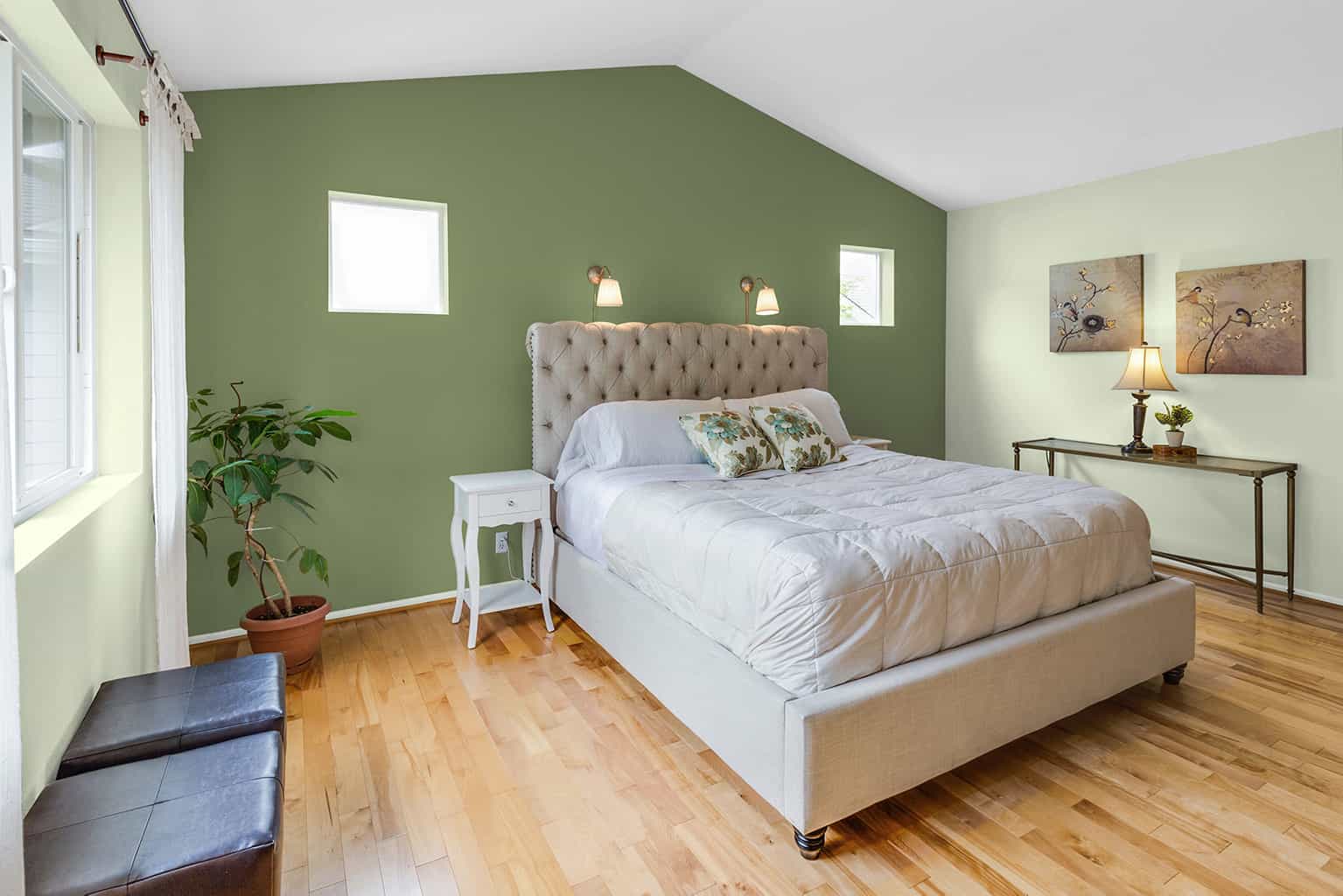Choosing Colors for Harmony and Balance: Paint Colors For Shared Bedrooms

A shared bedroom should be a haven for everyone who uses it, and the right color scheme can play a crucial role in creating a space that feels balanced and harmonious. Colors have a powerful impact on our mood and emotions, and choosing the right ones can foster a sense of calm, relaxation, and overall well-being.
Understanding Color Psychology
Color psychology explores the link between colors and human emotions. Understanding these connections can help you choose colors that promote relaxation and tranquility in a shared bedroom. For example, blue is often associated with calmness and serenity, while green is linked to nature and peace.
Color Palettes for Shared Bedrooms
Here are some color palettes that work well for shared bedrooms, considering factors like age, gender, and personal preferences:
- Neutral Tones: Neutral palettes, such as white, gray, beige, and cream, provide a clean and calming backdrop. They allow you to add pops of color through accent pieces, bedding, or artwork, making it easier to adapt the space as preferences change.
- Earthy Tones: Earthy tones like brown, green, and terracotta evoke a sense of nature and grounding. These colors can create a warm and inviting atmosphere, perfect for a shared bedroom.
- Soft Pastels: Soft pastel colors like lavender, blush pink, and light blue create a calming and serene ambiance. They are particularly suitable for younger children or teenagers who prefer a more whimsical and playful feel.
Incorporating Accent Colors
Accent colors add visual interest and personality to a space without overwhelming it. They can be introduced through:
- Bedding: Choose colorful throw pillows, blankets, or duvet covers to inject pops of color.
- Artwork: Hang artwork featuring vibrant colors that complement the overall color scheme.
- Rugs: A colorful rug can add a focal point and define different areas within the room.
Practical Considerations for Shared Bedrooms

When choosing paint colors for a shared bedroom, practical considerations play a crucial role in creating a functional and harmonious space. It’s important to think beyond aesthetics and consider factors that will impact the room’s usability and overall feel.
Choosing Easy-to-Maintain Colors
Choosing colors that are easy to maintain is essential in a shared bedroom, where spills, smudges, and everyday wear and tear are common. Consider the following factors:
- Stain Resistance: Opt for paint colors with a satin or semi-gloss finish, as they are more resistant to stains and easier to clean. These finishes are particularly well-suited for high-traffic areas like walls near doors and windows.
- Lightfastness: Lightfastness refers to a paint’s ability to resist fading from exposure to sunlight. Choose colors with good lightfastness ratings, especially for walls that receive direct sunlight, to prevent them from becoming dull or discolored over time.
Complementing Existing Furniture and Decor
Harmonizing paint colors with existing furniture and decor is key to creating a cohesive and visually appealing space. Consider the following:
- Color Palette: Identify the dominant colors in your furniture and decor, such as the bedding, rugs, and artwork. Choose paint colors that complement or contrast these hues, creating a balanced and inviting atmosphere.
- Neutrals as a Foundation: Using neutral colors like white, beige, or gray as a foundation for the walls allows you to introduce pops of color through furniture, accessories, and artwork. This approach provides flexibility and allows you to easily update the room’s style over time.
Creating a Sense of Space and Light, Paint colors for shared bedrooms
In a small shared bedroom, using color strategically can help create an illusion of space and enhance the natural light. Consider these tips:
- Light Colors for a Larger Feel: Light colors, such as pale blues, greens, or yellows, reflect light and make a room appear larger. These colors are particularly effective for small bedrooms with limited natural light.
- Accent Walls: Adding a bold accent wall with a darker or more saturated color can add depth and visual interest to a small bedroom. This technique can also help to define specific areas within the room, such as a reading nook or a play area.
Designing a Color Scheme for Different Lighting Conditions
Lighting conditions throughout the day can significantly affect how paint colors appear. Consider the following tips:
- Natural Light: In bedrooms with ample natural light, you can use a wider range of colors, including both warm and cool tones.
- Artificial Light: If a bedroom relies heavily on artificial light, it’s best to choose warm-toned colors that create a cozy and inviting atmosphere.
- Balancing Light and Dark: For bedrooms with varying lighting conditions, consider using a combination of light and dark colors to create a balanced and visually appealing space. For example, you can paint the walls a light neutral color and use darker accents for furniture or artwork.
Creating Distinct Zones Within a Shared Bedroom

Sharing a bedroom can be a challenge, especially for siblings with different personalities and interests. Creating distinct zones within the shared space can help foster a sense of individuality and encourage a more harmonious living environment. Color plays a significant role in defining these zones, providing visual cues that help siblings understand and respect each other’s personal spaces.
Using Color to Define Boundaries
Color can effectively create boundaries between different zones within a shared bedroom. By using contrasting colors, you can visually separate areas dedicated to different activities, such as studying, playing, or sleeping. For example, painting the study area a calming blue while using a vibrant yellow for the play area can clearly distinguish between these zones.
Using color to define boundaries can be especially helpful for younger siblings who might not fully grasp the concept of personal space.
Color Combinations for Separation
Here are some color combinations that can be used to create a sense of separation without feeling overly divided:
- Neutral with a Pop of Color: Using a neutral base color, such as white or gray, for the majority of the room and then adding a bright accent color for each sibling’s zone can create a cohesive look while still allowing for individuality. For example, you could use a light gray for the walls and then add a bright turquoise for one sibling’s study area and a sunny yellow for the other sibling’s play area.
- Complementary Colors: Complementary colors are located opposite each other on the color wheel and create a high-contrast effect. Using complementary colors can create a strong visual separation between zones. For example, using a deep blue for one sibling’s sleeping area and a bright orange for the other sibling’s study area can clearly define these spaces.
- Analogous Colors: Analogous colors are located next to each other on the color wheel and create a harmonious and calming effect. Using analogous colors can create a subtle separation between zones while still maintaining a sense of unity. For example, using a soft green for one sibling’s play area and a calming blue for the other sibling’s sleeping area can create a peaceful and relaxing atmosphere.
Color Combinations for Different Age Groups
| Age Group | Color Combinations | Description |
|---|---|---|
| Toddlers and Preschoolers | Bright and playful colors like yellow, orange, and green | These colors are stimulating and encourage creativity and play. |
| Elementary School Children | Calming colors like blue, green, and purple | These colors help to create a peaceful and focused atmosphere for studying and relaxing. |
| Teenagers | Bold and modern colors like black, white, and gray | These colors are sophisticated and reflect the evolving tastes of teenagers. |
Paint colors for shared bedrooms – Finding the perfect paint colors for a shared bedroom can be a fun challenge! You want a neutral backdrop that works for both kids, but maybe you’re also thinking about adding a bit of personality with a “pop of color.” For inspiration, check out this guide on pop of color bedrooms and then think about how you can incorporate those ideas into your shared space! Maybe one wall gets a bold accent color, or you use colorful bedding and accessories.
The possibilities are endless!
Choosing paint colors for shared bedrooms can be a balancing act! You want a color that appeals to both kids, right? If you have two boys, consider using a neutral base like a soft gray or beige, and then add pops of color with accents like bedding, artwork, and furniture.
For some inspiration on creating a fantastic boys’ space, check out this guide on paint color schemes for boys bedroom. Remember, the key is to find a balance between the two personalities and create a space that feels welcoming and comfortable for both boys.
